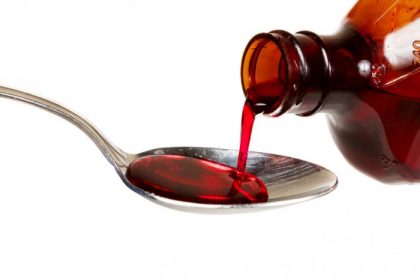- Home
- Editorial
- News
- Practice Guidelines
- Anesthesiology Guidelines
- Cancer Guidelines
- Cardiac Sciences Guidelines
- Critical Care Guidelines
- Dentistry Guidelines
- Dermatology Guidelines
- Diabetes and Endo Guidelines
- Diagnostics Guidelines
- ENT Guidelines
- Featured Practice Guidelines
- Gastroenterology Guidelines
- Geriatrics Guidelines
- Medicine Guidelines
- Nephrology Guidelines
- Neurosciences Guidelines
- Obs and Gynae Guidelines
- Ophthalmology Guidelines
- Orthopaedics Guidelines
- Paediatrics Guidelines
- Psychiatry Guidelines
- Pulmonology Guidelines
- Radiology Guidelines
- Surgery Guidelines
- Urology Guidelines
Do not use Tramadol and Codeine in Kids Under 12: New FDA Warning

FDA Also recommended against the use of codeine and tramadol medicines in breastfeeding mothers due to possible harm to their infants.
US: Children younger than 12 years should not take tramadol (multiple brands) or codeine, which pose the serious risk for slowed or difficult breathing and death, the US Food and Drug Administration (FDA) announced today.
The health and safety of children is a top priority at the FDA, which is why we are requiring a series of changes to the labeling of two types of opioid medications in order to help better protect children from serious risks associated with these medicines codeine (found in some prescription pain and cough medicines and some over-the-counter cough medicines) and tramadol (found in some prescription pain medicines), the safety issued by the authority stated.
As a result, FDA announced several changes to the labels of all prescription medicines containing these drugs. These new actions further limit the use of these medicines beyond the 2013 restriction of codeine use in children younger than 18 years to treat pain after surgery to remove the tonsils and/or adenoids. USFDA has hence added:
FDA’s strongest warning, called a Contraindication, to the drug labels of codeine and tramadol alerting that codeine should not be used to treat pain or cough and tramadol should not be used to treat pain in children younger than 12 years.
A new Contraindication to the tramadol label warning against its use in children younger than 18 years to treat pain after surgery to remove the tonsils and/or adenoids.
A new Warning to the drug labels of codeine and tramadol to recommend against their use in adolescents between 12 and 18 years who are obese or have conditions such as obstructive sleep apnea or severe lung disease, which may increase the risk of serious breathing problems.
A strengthened Warning to mothers that breastfeeding is not recommended when taking codeine or tramadol medicines due to the risk of serious adverse reactions in breastfed infants. These can include excess sleepiness, difficulty breastfeeding, or serious breathing problems that could result in death.
The main reasoning behind the warning came as some children who received codeine or tramadol have experienced life-threatening respiratory depression and death because they metabolize (or break down) these medicines much faster than usual (called ultra-rapid metabolism), causing dangerously high levels of active drug in their bodies. This is especially concerning in children under 12 years of age and adolescents who are obese or have conditions that may increase the risk of breathing problems, like obstructive sleep apnea or lung disease. Respiratory depression can also occur in nursing babies, when mothers who are ultra-rapid metabolizers take these types of medicines and pass it along to their children through their breast milk.
Codeine and tramadol are a type of narcotic medicine called an opioid. Codeine is used to treat mild to moderate pain and also to reduce coughing. It is usually combined with other medicines, such as acetaminophen, in prescription pain medicines. It is frequently combined with other drugs in prescription and over-the-counter (OTC) cough and cold medicines. Tramadol is a prescription medicine approved only for use in adults to treat moderate to moderately severe pain. However, data show it is being used in children and adolescents despite the fact that it is not approved for use in these patients.
Advice to Patients
Caregivers and patients should always read the label on prescription bottles to find out if a medicine contains codeine or tramadol. You can also ask your child’s health care provider or a pharmacist. Watch closely for signs of breathing problems in a child of any age who is taking these medicines or in infants exposed to codeine or tramadol through breastmilk. These signs include slow or shallow breathing, difficulty or noisy breathing, confusion, more than usual sleepiness, trouble breastfeeding, or limpness. If you notice any of these signs, stop giving the medicine and seek medical attention immediately by going to an emergency room
Advice to Health care professionals
Health care professionals should be aware that tramadol and single-ingredient codeine medicines are FDA-approved only for use in adults. Consider recommending over-the-counter (OTC) or other FDA-approved prescription medicines for cough and pain management in children younger than 12 years and in adolescents younger than 18 years, especially those with certain genetic factors, obesity, or obstructive sleep apnea and other breathing problems. Cough is often secondary to infection, not serious, and usually will get better on its own so treatment may not be necessary.

Disclaimer: This site is primarily intended for healthcare professionals. Any content/information on this website does not replace the advice of medical and/or health professionals and should not be construed as medical/diagnostic advice/endorsement or prescription. Use of this site is subject to our terms of use, privacy policy, advertisement policy. © 2020 Minerva Medical Treatment Pvt Ltd